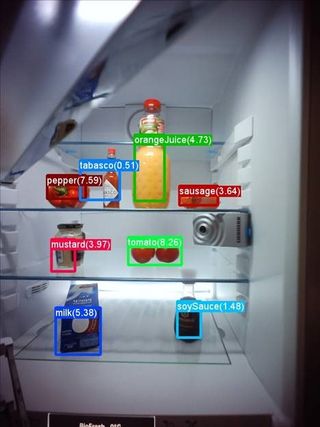Microsoft is working on a smart fridge that tells you what you’re missing
Intelligent fridge can tell you when you're out of milk

If you thought grocery shopping could hardly get much easier, think again.
Microsoft is collaborating with Liebherr's appliances division to develop SmartDeviceBox', a communication module that connects Liebherr's refrigerators and freezers to the internet.
Thanks to internal cameras and deep learning algorithms similar to those of Cortana (Microsoft's Artificial Intelligence), Microsoft's new fridge technology recognises food packaging, and effectively monitors what products you have at home.
"This information flows automatically into an inventory list, which lets the customer see quickly and clearly what is in the refrigerator from anywhere," said Microsoft's principal data scientist Timothy J. Hazan in a blog post.

"Using the SmartDeviceBox' voice module, additional groceries can be added to a shopping list that customers can access when on the move using an app for iOS, Android or Windows devices."
This intelligent fridge' would improve by the day, as it gathers a wider pool of data from all users around the world. Using millions of example images to start with, the Microsoft system can learn to recognise new types of objects including milk cartons, ketchup bottles, pickle jars and more.
Microsoft is not the only company developing tech-savvy fridges.
Get the ITPro. daily newsletter
Receive our latest news, industry updates, featured resources and more. Sign up today to receive our FREE report on AI cyber crime & security - newly updated for 2024.
On the IFA show floor, LG displayed a fridge with a touchscreen Windows 10 tablet on its door, that becomes translucent and lets you spot things like food purchase dates on its surface. This fridge allows its users to watch videos, find recipes or read the news from it.
Samsung is also working on a similar appliance called Family Hub Fridge, a refrigerator that allows you to shop for food, stream content, and receive pictures taken by its internal cameras.
Microsoft and Liebherr's technology would be the next step, as it does not only take pictures of its contents but decodes those pictures for you, providing an updated electronic list of everything inside your fridge, available on your portable devices at all times.
Currently the device is only a prototype, with no news on whether it will go into production.
Most Popular





